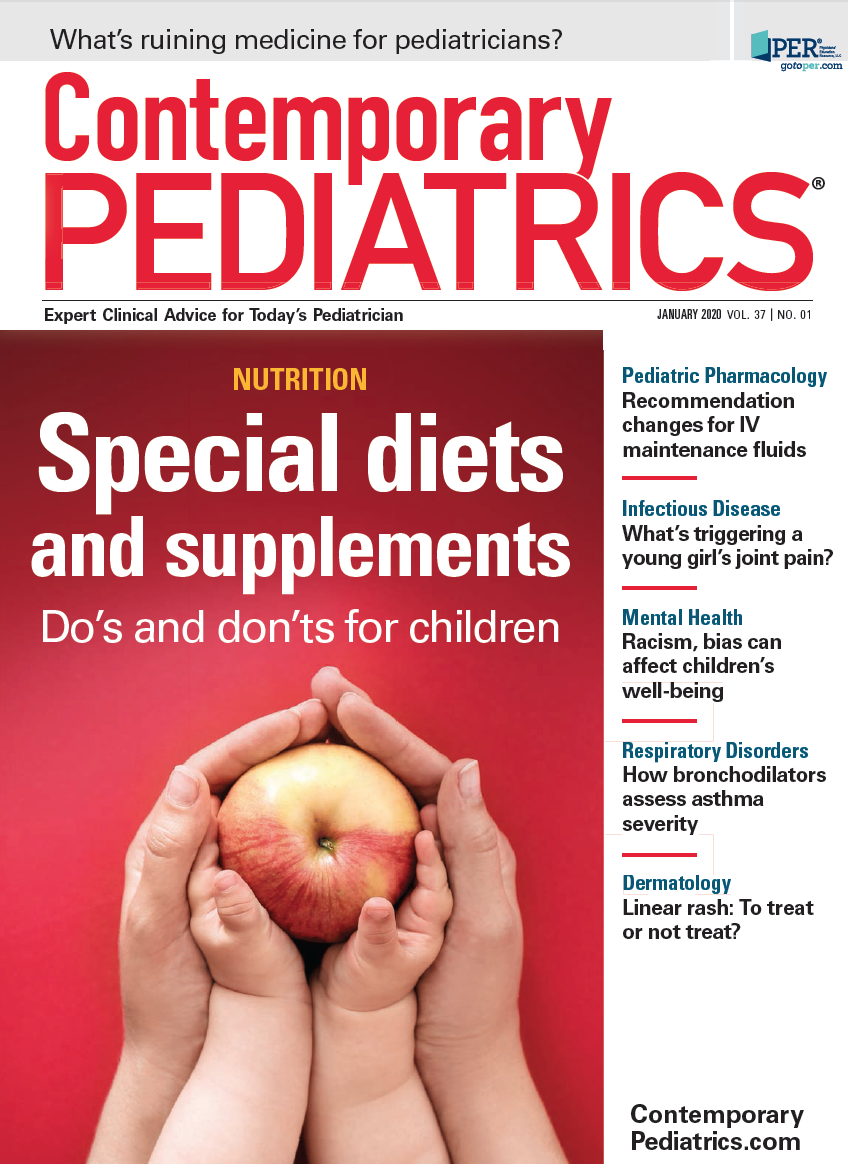How bronchodilators can help assess asthma severity
Bronchodilator response may offer a signal to pediatricians on the severity of a patient’s asthma, and can be used to help manage the condition.
Andrea Coverstone, MD

For children with severe asthma, management of the disease can be more difficult, particularly in how well these patients respond to bronchodilators, according to a recent report.
The study, published in Pediatric Pulmonology, revealed that children with severe asthma have lower lung function-or predicted FEV1%-and poorer asthma control than children with more moderate asthma. This information, however, can offer clinicians new tools to help their patients manage asthma and hopefully prevent exacerbation.
Andrea Coverstone, MD, pediatric pulmonologist and professor of pediatrics at Washington University in St. Louis, Missouri, and lead author of the report says it’s important for pediatricians to be aware that bronchodilator response in patients with asthma can be used not only as a diagnostic tool, but also as a clinical tool for assessing asthma severity.
“The maximal bronchodilator response is associated with more asthma exacerbations and hospitalizations at baseline, as well as lower lung function and worse asthma control at 1-year follow-up,” she says.
Researchers analyzed the characteristics associated with reversibility of airflow obstruction and response to maximal bronchodilation in children aged 6 to 17 years who were enrolled in the National Heart, Lung and Blood Institute’s Severe Asthma Research Program (SARP). Lung function is a predictor of bronchodilator response in children with asthma, according to the report, and bronchodilator response can be used to identify a phenotype of pediatric asthma with particularly low lung function and poor asthma control.
In the study, participants with diagnosed asthma were evaluated for multiple allergens, and had serum immunoglobulin testing completed. Researchers tested fractional exhaled nitric oxide (FeNO) and performed spirometry, calculating bronchodilator reversibility as ≥12% FEVâ from their baseline. These maximum relative increases were found to be significantly higher in children with severe asthma than in those with non-severe asthma. Secondhand smoke exposure and FeNO were associated with higher reversibility after bronchodilators were given, and a higher prebronchodilator FEVâ% was associated with lower odds. Additionally, for the entire cohort, bronchodilator reversibility was associated with neutrophil counts, immunoglobulin E, and predicted FEVâ%.
The study is important because it may help identify children with asthma who may be at risk of having airflow obstruction reversibility after maximal bronchodilator administration. Coverstone says the study highlights the benefit of bronchodilator response testing as a clinical tool for ongoing care.
“While it is recommended to monitor lung function at least annually in patients with asthma, it is not common practice to routinely assess the bronchodilator response outside of the initial assessment when diagnosing asthma,” she says. “This study identifies the bronchodilator response as another tool for phenotyping asthma in children.”
Coverstone says the longitudinal findings of the report surprised her most.
“Children with a 12% bronchodilator response at their baseline assessment had less decline in lung function at 1 year compared to those that did not have a bronchodilator response; however, they also had lower lung function at initial assessment and despite having less decline, lung function remained lower at that 1 year follow-up assessment,” she says.
Coverstone suggests that long follow-up may help determine the trajectory of lung function in children with severe asthma.
“Is having a bronchodilator response indicative of the lung’s capability of preserving lung function? It appears that the bronchodilator response can be an indicator of a more severe asthma phenotype with lower lung function and asthma control, but also might indicate those more likely to respond to treatment,” she says. “Other studies have shown that a bronchodilator response is associated with a positive response to treatment with inhaled corticosteroids.”
Pediatricians should consider regularly assess bronchodilator response in their severe asthma patients to help in assessing their condition and their response to treatment, she adds. Additionally, practitioners should be aware of differences in asthma management at different severity levels, and be aware of other exposures patients have that may exacerbate their condition, like cigarette smoke exposure.
“It is important to note that children with less severe asthma often do not achieve the same level of bronchodilator response to lower doses of albuterol than those with severe asthma, and that the baseline lung function is strongly associated with the response to bronchodilators,” she says. “In clinical practice, using higher doses of albuterol may be useful in assessing the maximal response in combination with the use of FeNO, which is also associated with bronchodilator response. Assessing for smoke exposure in the home is a must.”

Having "the talk" with teen patients
June 17th 2022A visit with a pediatric clinician is an ideal time to ensure that a teenager knows the correct information, has the opportunity to make certain contraceptive choices, and instill the knowledge that the pediatric office is a safe place to come for help.
Meet the Board: Vivian P. Hernandez-Trujillo, MD, FAAP, FAAAAI, FACAAI
May 20th 2022Contemporary Pediatrics sat down with one of our newest editorial advisory board members: Vivian P. Hernandez-Trujillo, MD, FAAP, FAAAAI, FACAAI to discuss what led to her career in medicine and what she thinks the future holds for pediatrics.